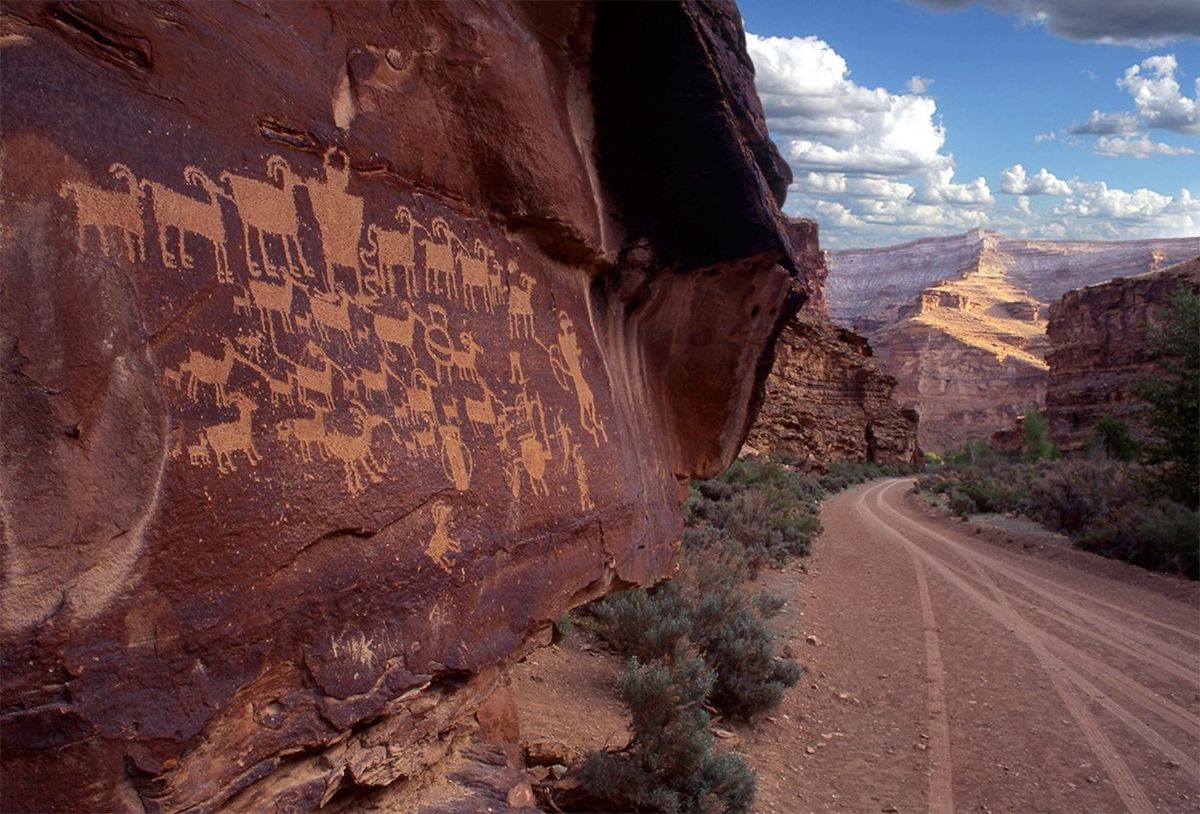The Bureau of Land Management (BLM), the agency that works with the United States Department of the Interior to oversee federal lands, is considering a proposal to overhaul a 5.2-mile stretch of a road in an area of eastern Utah that is so rich with Indigenous petroglyphs that is has been dubbed “the world’s longest art gallery”, raising concerns about the risks to those archaeological sites.
The widening and straightening of Wells Draw Road in Gate Canyon near its intersection with Nine Mile Canyon would create a thoroughfare that local officials believe could see up to 1,000 vehicles per day, more than half of them large oil tanker trucks travelling between oil fields to the north near Myton and rail loading facilities to the south near Wellington.
“We have the responsibility to assess the potential effects of the proposal on the environment, cultural resources and the many people who use these lands and resources,” said Lance Porter, BLM’s manager for the Green River District, said in a statement seeking public feedback on the proposal. The agency is accepting feedback through 8 February.
“That same proximity of rock art to the road allows the opportunity for people to appreciate and enjoy the images in a relatively natural setting,” Kent Williams, the president of the Utah Rock Art Research Association, told The Salt Lake Tribune. “A steady stream of semitrucks with noise and diesel exhaust would degrade that experience. Nine Mile Canyon is a one-of-a-kind outdoor museum with world class rock art. Surely there is a better alternative for a hydrocarbon highway.”
Despite its name, Nine Mile Canyon actually stretches 40 miles and includes many large petroglyph complexes and other archaeological sites, some of which date back to the Archaic period (7000-500 BCE) while others have been attributed to the groups known as the so-called Fremont culture that thrived in the region between 300 and 1300 CE. The ancient rock art attractions have become the focal point of efforts to turn this area spanning Duchesne and Carbon counties into a tourist destination. Some are concerned that nearby resource extraction industries—including those that would benefit from the widening of Wells Draw Road—could undermine those efforts.
“The idea that anyone would allow this type of development inside Carbon County’s most important tourism resource is an affront to those of us working so hard to bring visitors and attention to our world-famous attractions,” Layne Miller, a canyon tour guide and preservationist who co-founded the Nine Mile Canyon Coalition serves on the city council in the nearby community of Price, told The Salt Lake Tribune. “To put it bluntly, tourists and oil tankers don’t mix.”
Mineral extraction and energy development projects in Utah routinely pose risks to the state’s many natural and archaeological attractions. Last year, Republican lawmakers in the state sued the Biden administration to open up parts of archaeologically rich Bears Ears and Grand Staircase-Escalante National Monuments for uranium mining and other resource extraction activities.


